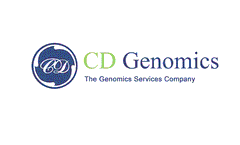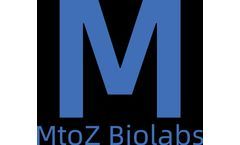Advanced Protein Sequencing Articles & Analysis
75 articles found
Through its impact on translation efficiency and mitochondrial function tRNA methylation modification also promotes tumor cell proliferation by controlling cell cycle-related protein expression. Cell cycle progression within cells is a critical biological function whose stoppage and progression rely entirely on cell cycle-related protein expressions. ...
The Type II restriction endonuclease HindII (from Haemophilus influenzae Rd) remains a versatile molecular tool despite being one of the earliest restriction enzymes characterized. While many researchers now default to enzymes with longer recognition sequences for routine cloning, HindII enzyme activity characteristics provide distinct advantages in specialized applications including methylation ...
The Type II restriction endonuclease HindII (from Haemophilus influenzae Rd) remains a versatile molecular tool despite being one of the earliest restriction enzymes characterized. While many researchers now default to enzymes with longer recognition sequences for routine cloning, HindII enzyme activity characteristics provide distinct advantages in specialized applications including methylation ...
However, recent advancements in RNA-seq technologies have introduced innovative methods that delve deeper into the post-transcriptional networks governed by small RNAs and the associated RNA-binding proteins within pathogens. Among these advancements, dual RNA sequencing (dual RNA-seq) stands out as a groundbreaking technique ...
The advent of next-generation sequencing (NGS) has revolutionized the field of microbiome research, particularly through the analysis of 16S rRNA gene sequencing. This technique allows for a comprehensive understanding of microbial communities, providing insights into their composition and functional potential. This article outlines best practices for the bioinformatics analysis of 16S rRNA ...
Next-Generation Sequencing (NGS) has revolutionized genomics, providing unprecedented insights into the structure and function of genomes, transcriptomes, and epigenomes. A critical step in the NGS workflow is library preparation, which involves converting DNA or RNA samples into a form that can be sequenced. NGS Library Preparation Kits play a pivotal role in this process, ensuring high-quality ...
Within the rapidly advancing realm of biotechnology, zebrafish genome editing services are carving a niche, heralding a new epoch in genomics and cellular research. This development is driving innovative research approaches, empowering researchers to create effective models to comprehend complex genetic interactions and responses quickly and efficiently. Zebrafish, also known as Danio rerio, ...
In recent years, the landscape of sequencing technologies has undergone a transformative shift, transitioning from research settings to the realm of clinical laboratories. This transformation has been catalyzed by rapid technological advancements and significant cost reductions. Despite a multitude of microorganisms known to inflict human infections, prevailing diagnostic techniques merely ...
When a ribosome is affixed to the polypeptide (protein) it is making, the ribosome-nascent chain complex (RNC) is the compilation of molecules that make up the ribosome. One of several methods can be used to halt the synthesis of the nascent polypeptide. RNCs are made and purified in labs to study the dynamics, biochemistry, folding, and interactions that the ribosome and proteins undergoing ...
Submission of sequence data to NCBI archives Next-generation sequencing, PacBio SMRT sequencing, and Nanopore sequencing, can generate numerous sequence data in a single run. Raw reads or assembled sequence need to be submitted to public sequence repository (DDBJ/ENA/GenBank - INSDC), which is required by the overwhelming majority of journals as accession numbers of theses sequence data should ...
Understanding Clonality Analysis Clonality refers to the origin of a cell population from a single 'parent' or progenitor cell through asexual reproduction or division. This concept is vital in cancer studies as it helps track the development of tumor cells from a single mutated cell. Clonality analysis is thus essential in understanding the evolution and the spread of cancerous cells in a ...
Researchers have long been striving to identify antibodies that can combat pathogenic microorganisms. However, traditional methods of antibody discovery require substantial time and effort and often fail to identify the most effective antibodies. In recent years, the advancement of single-cell sequencing technologies has offered a new possibility for the screening of antibodies.What is ...
Protein-Protein Interaction Sequencing (PPI-Seq) is an emerging technology. ...
ESMO updated its recommendations for NGS in advanced cancers this year, urging broader use of NGS in additional cancer types and the inclusion of tumor-agnostic biomarkers. The ESMO Precision Medicine Working Group (PMWG) first published its recommendations for when to use next-generation sequencing (NGS) in routine practice for patients with metastatic cancers in 20201. At that time, based ...
With the continuous advancement of protein, peptide, and antibody sequencing technology, they are playing an increasingly important role in the medical field.Precision Medicine and Targeted TherapyThrough protein and polypeptide sequencing, we can understand the differences of individuals at the ...
Assisting Risk Assessment and Quality Control Through in-depth analysis of antibody sequences, we can predict potential immunogenicity and toxicity risks of antibodies, such as the existence of some protein post-translational modification (PTMs) sites, affecting the therapeutic effect of antibody drugs. Accordingly, we can take measures to avoid such risks in ...
Dr. Kate Sasser from Tempus led a discussion on the potential of antibody-drug conjugates (ADCs), their challenges in targeting tumor antigens, and the future of cancer treatment with Dr. Daniel Johnson, Dr. Funda Meric-Bernstam, and Dr. Kellogg Parsons. The oncology field is rapidly advancing with the development of antibody-drug conjugates (ADCs), offering new hope for ...
ByTempus
Introduction to Variant Analysis Rare DNA changes within a population of cells are the first manifestations of mutations, which are the fuel for evolution. The research of genomic variation between species and individual organisms has been revolutionized by next-generation sequencing (NGS) technologies. Variant detection and analysis refer to the sequencing and difference analysis of a genome ...
Rare diseases, also known as orphan diseases, affect a small percentage of the population, making them particularly challenging to diagnose and treat. However, thanks to advancements in medical research and technology, significant progress has been made in the field of rare disease research, from developing accurate diagnostic tools to making effective small-molecule drugs. One of the biggest ...
Karyotype analysis refers to the pairing and grouping of chromosomes to reveal whether the organism accords with the inherent chromosomal characteristics, to determine if the organism has chromosomal abnormalities. Karyotype analysis can detect whether there are abnormalities in chromatin length, centromere position, the ratio of long and short arms, and the presence or absence of satellites. ...












